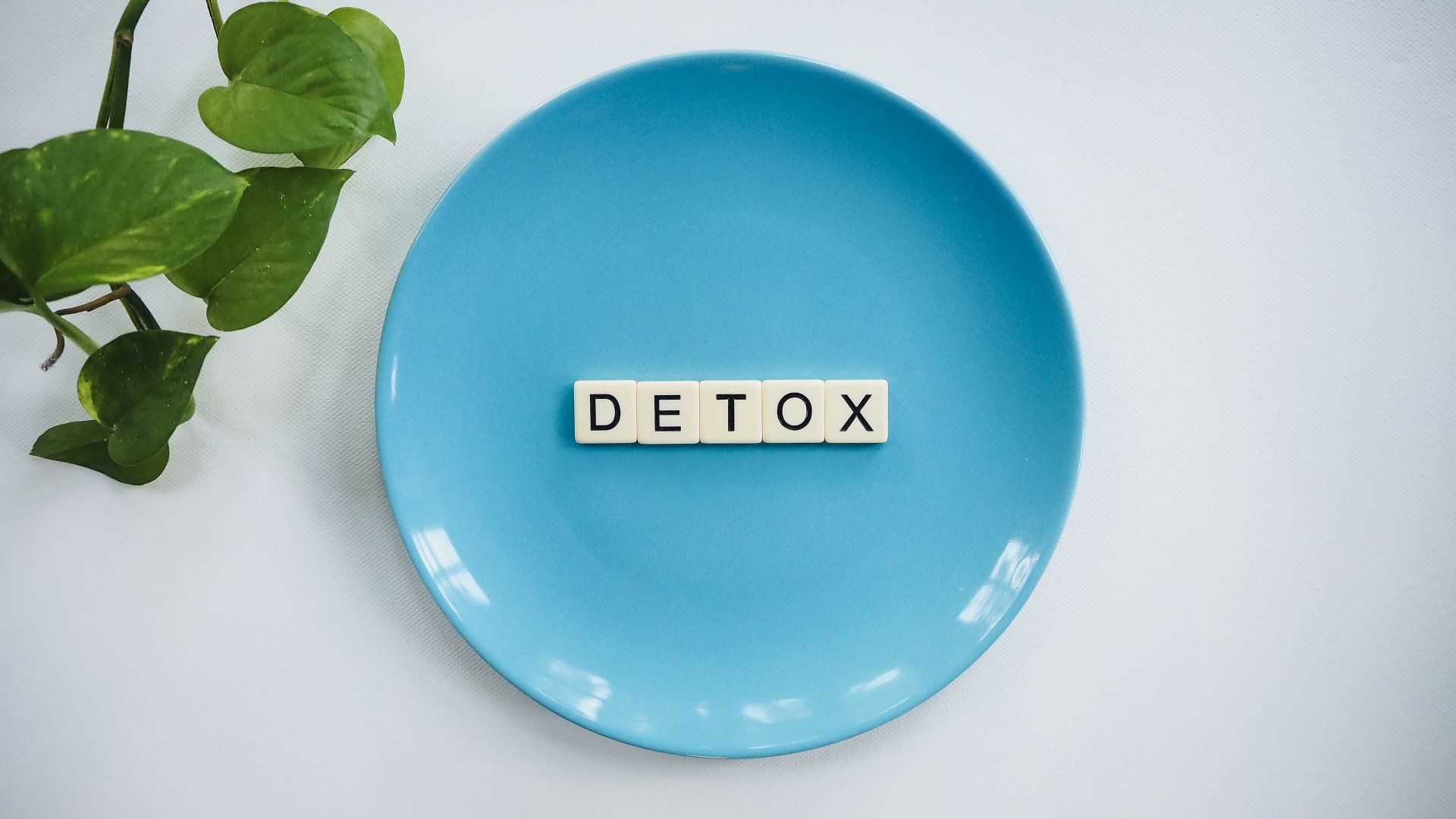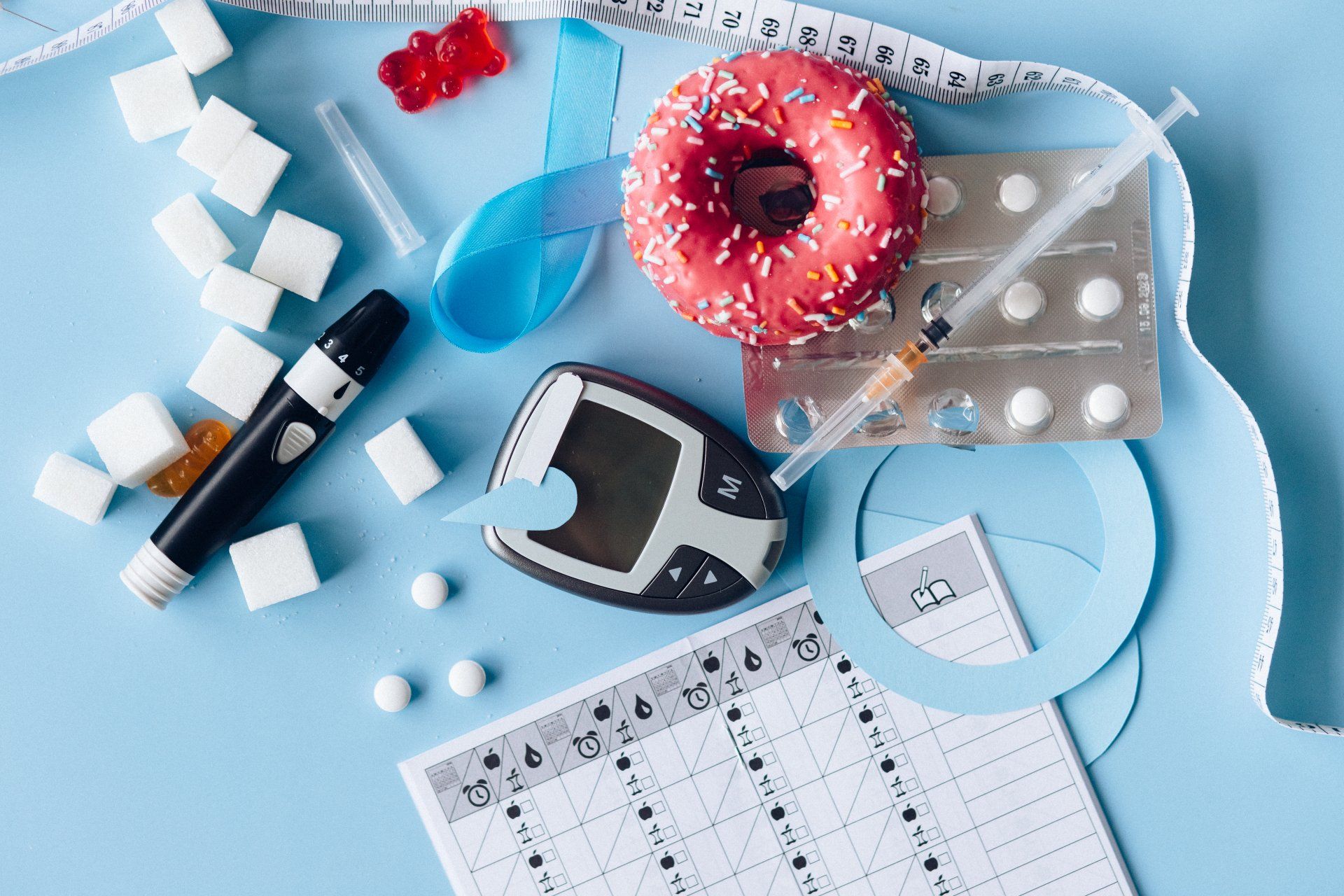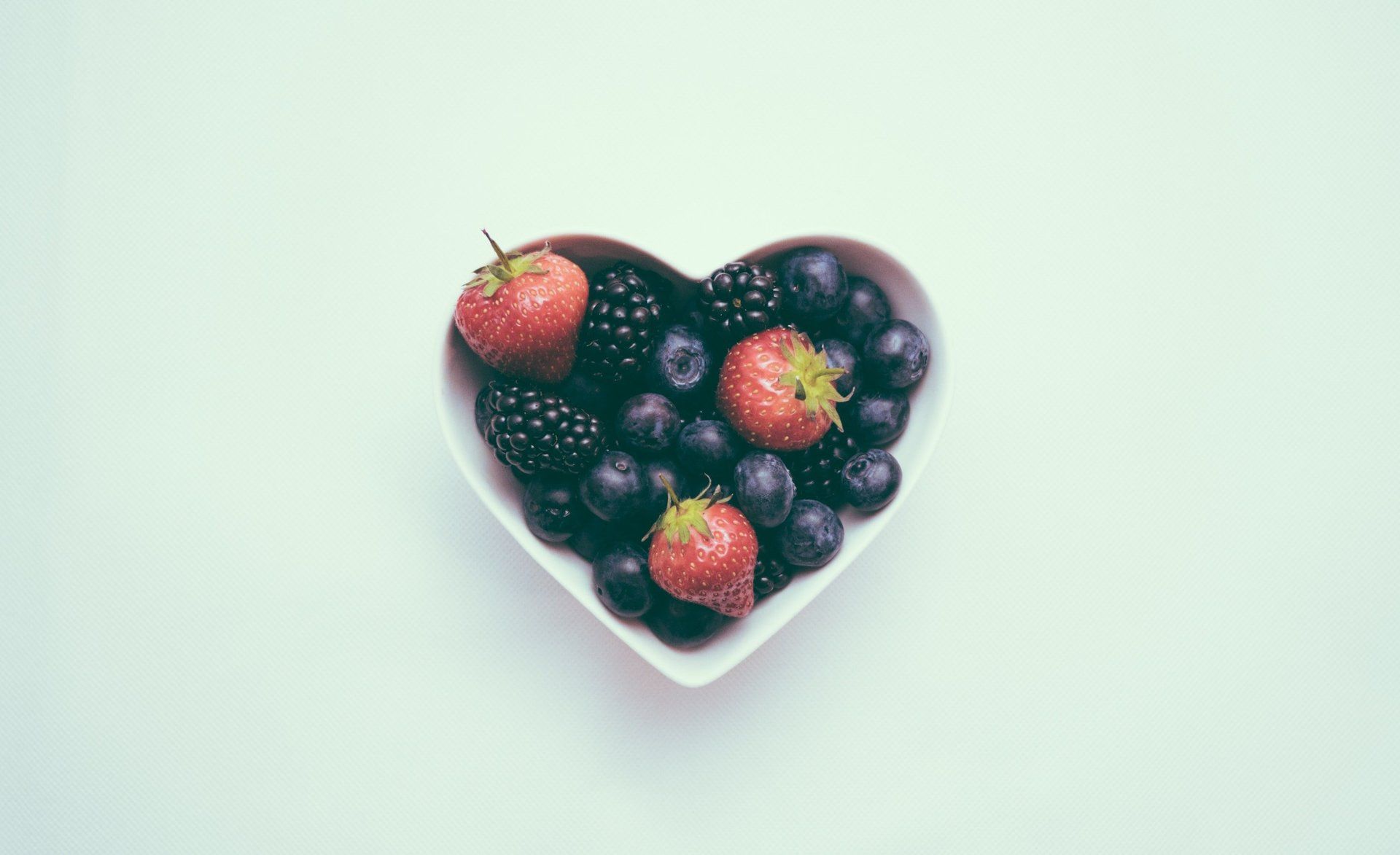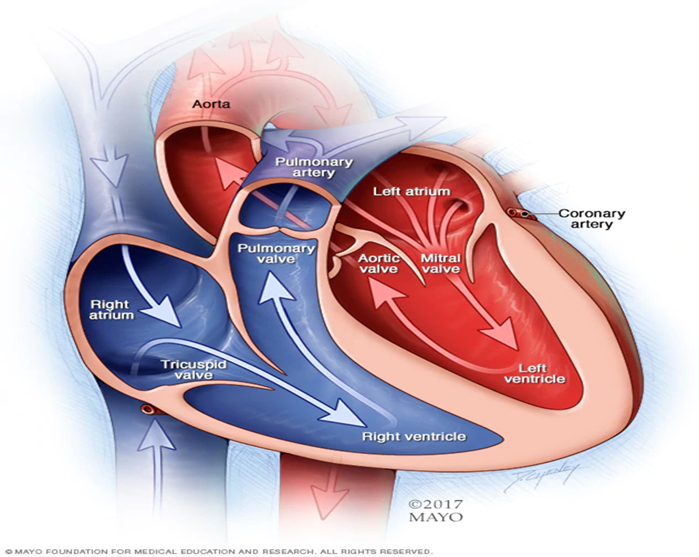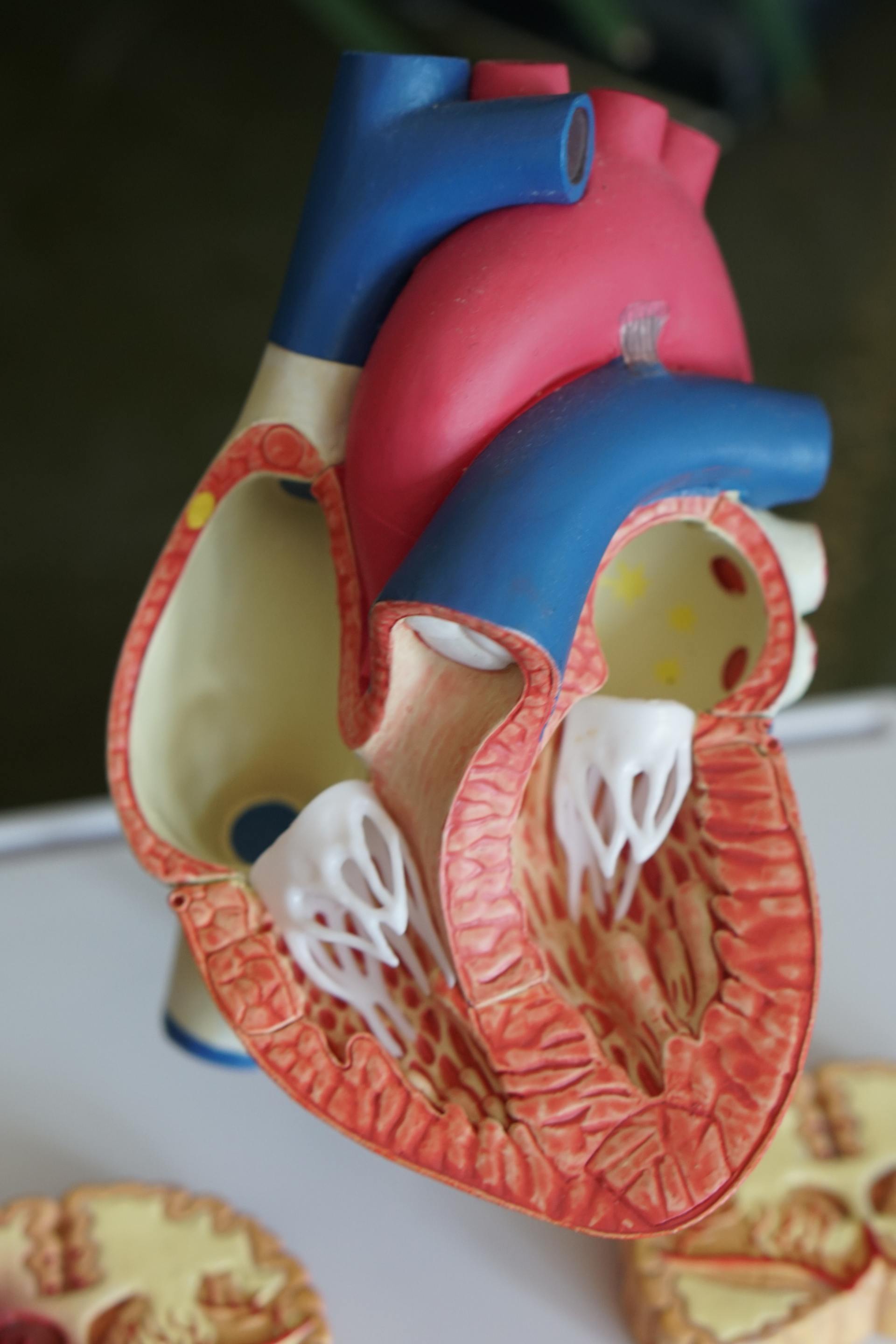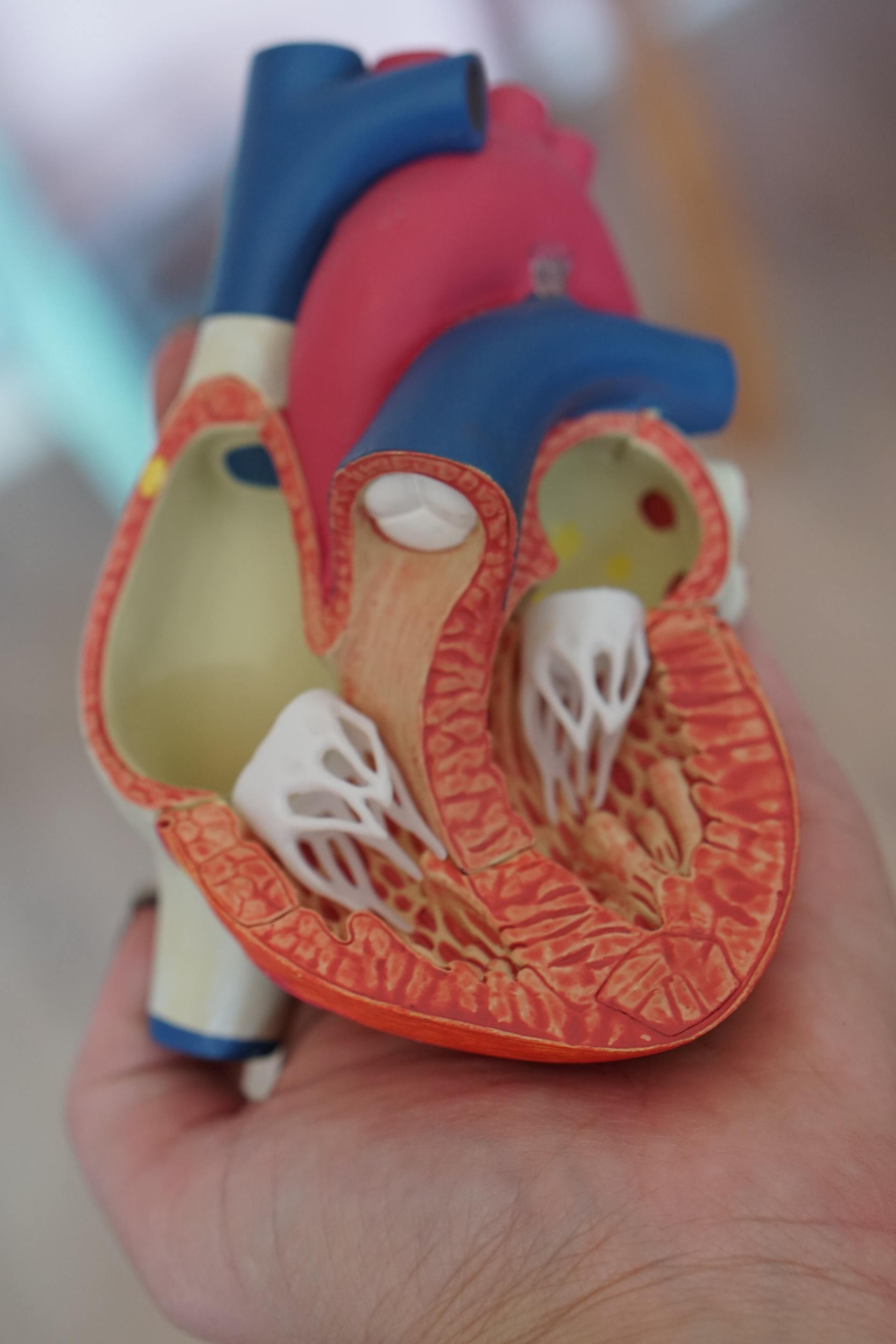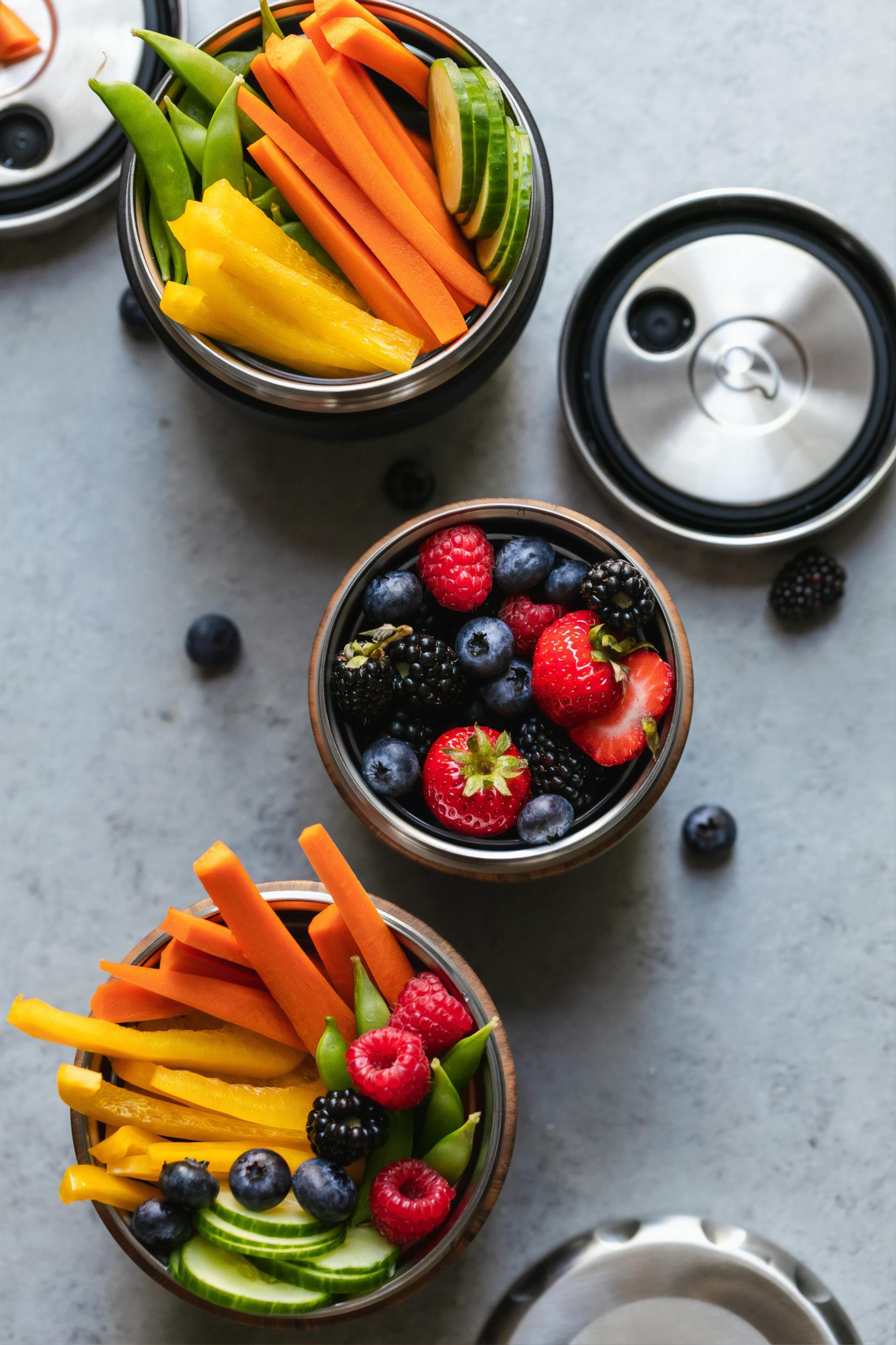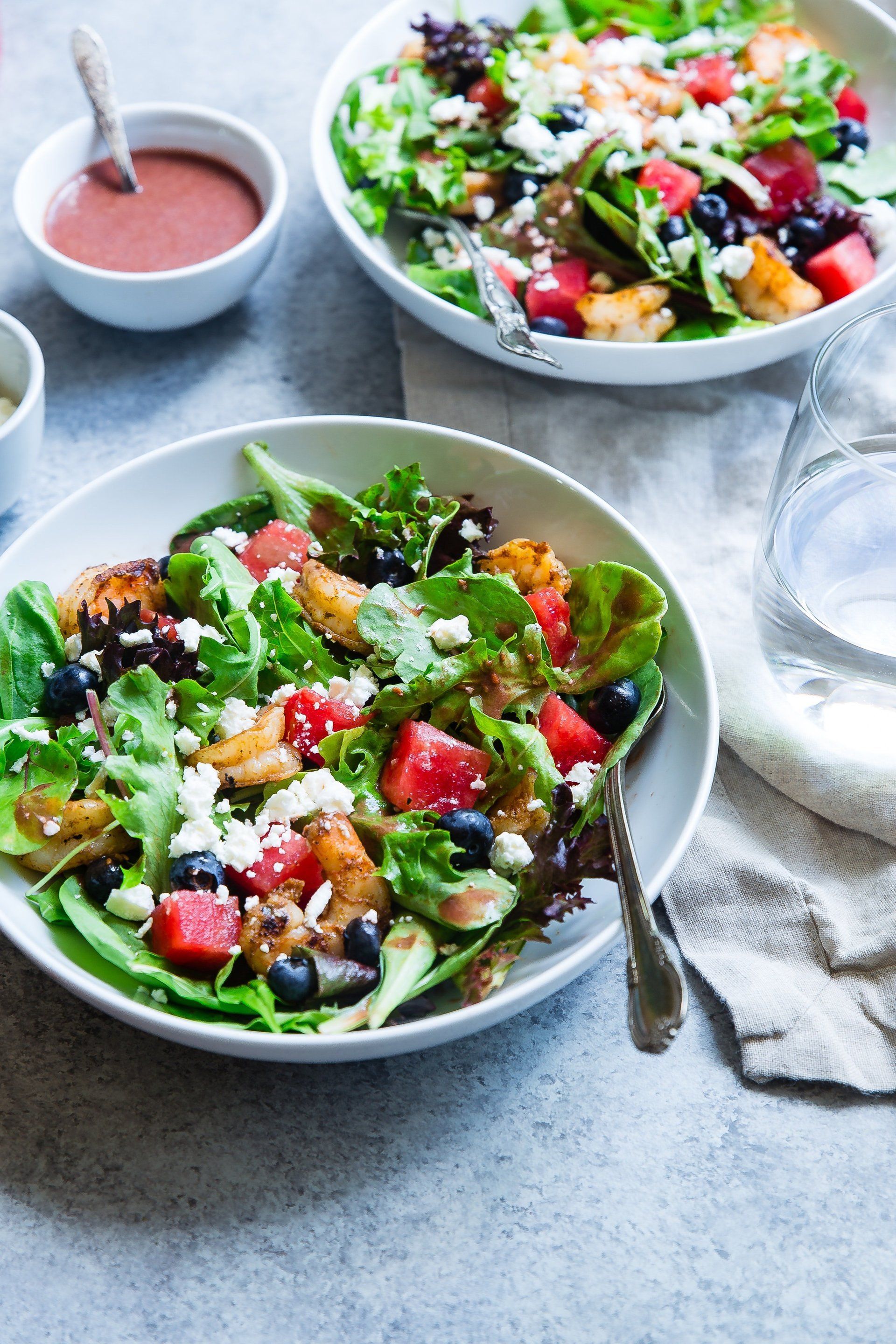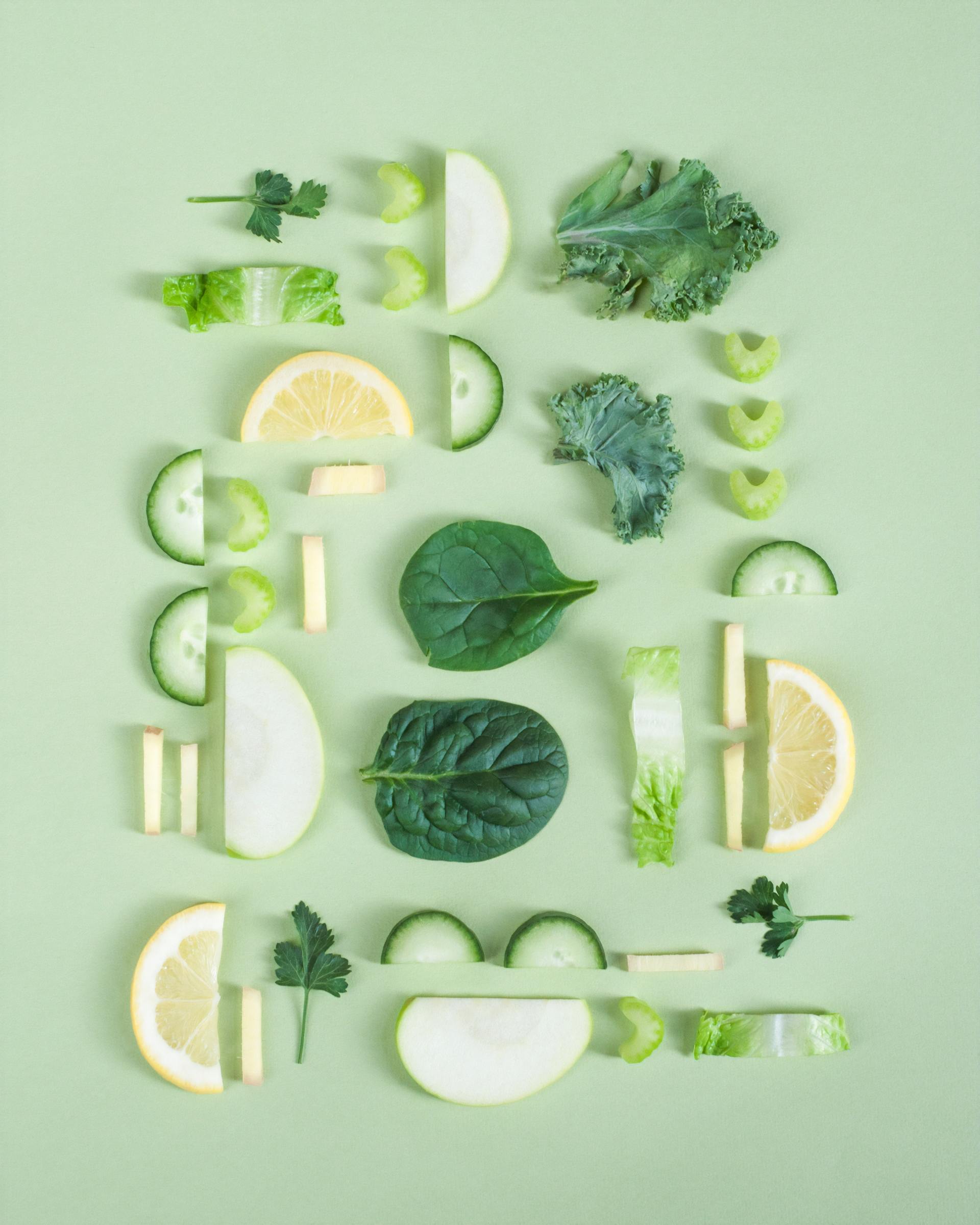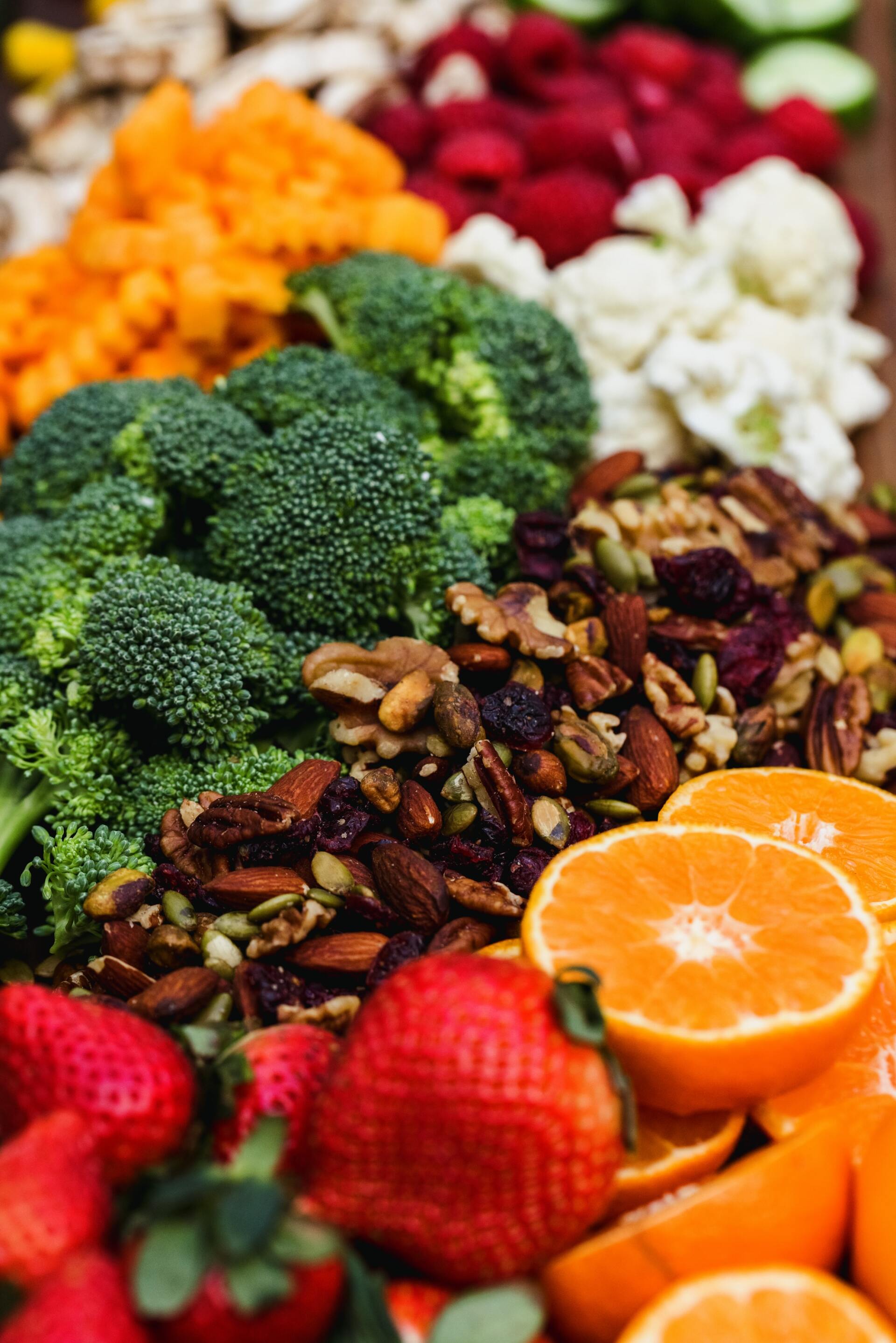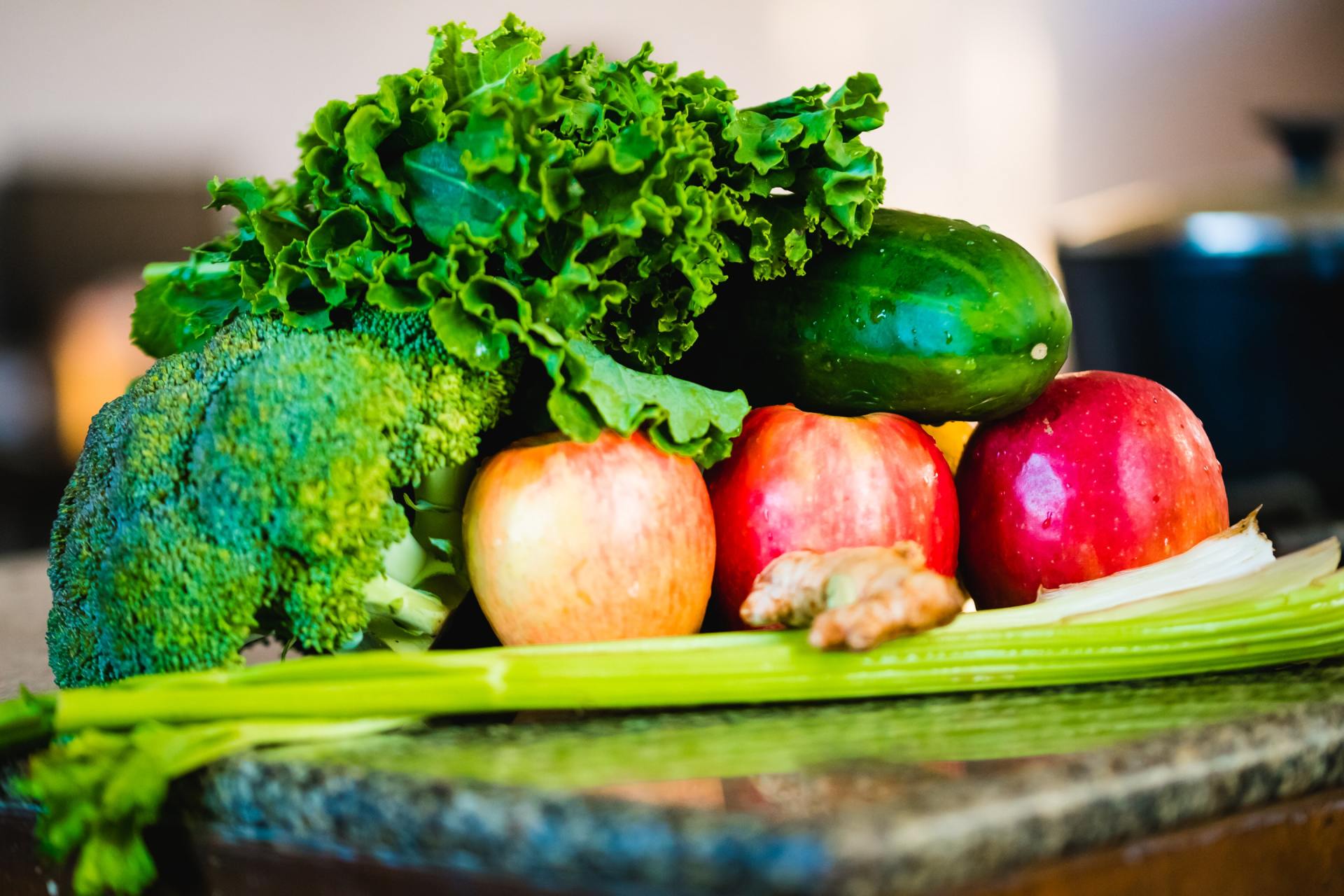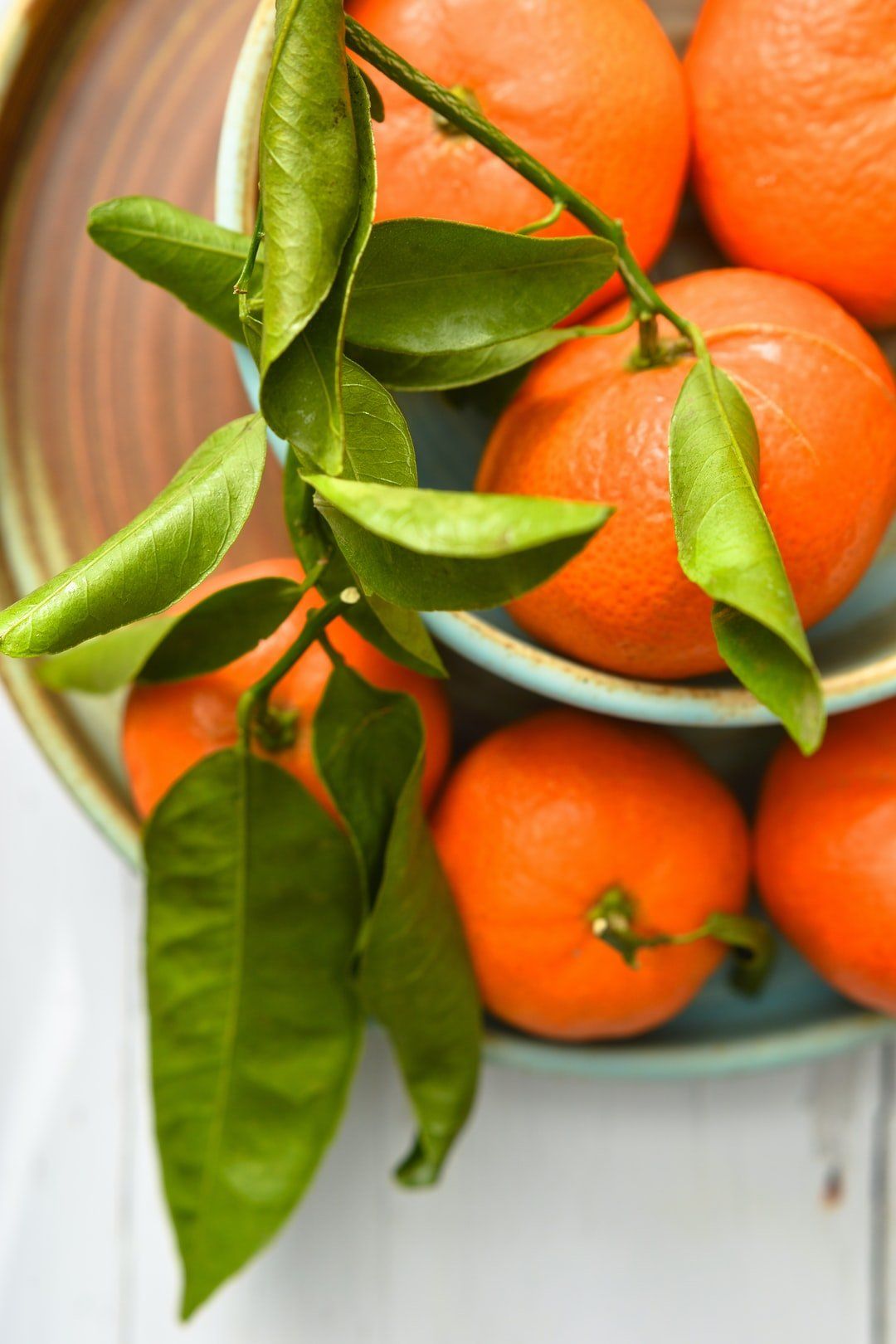Although you might know that eating certain foods can increase your heart disease risk, changing your eating habits is often tough. Whether you have years of unhealthy eating under your belt or you simply want to fine-tune your diet, here are some heart-healthy diet tips. Once you know which foods to eat more of and which foods to limit, you'll be on your way toward a heart-healthy diet.
1. Control your portion size
How much you eat is just as important as what you eat. Overloading your plate, taking seconds and eating until you feel stuffed can lead to eating more calories than you should. Portions served in restaurants are often more than anyone needs.
Following a few simple tips to control food portion size can help you shape up your diet as well as your heart and waistline:
Use a small plate or bowl to help control your portions.
Eat more low-calorie, nutrient-rich foods, such as fruits and vegetables
Eat smaller amounts of high-calorie, high-sodium foods, such as refined, processed or fast foods.
It's also important to keep track of the number of servings you eat.
A serving size is a specific amount of food, defined by common measurements such as cups, ounces or pieces. For example, one serving of pasta is about 1/3 to 1/2 cup, or about the size of a hockey puck. A serving of meat, fish or chicken is about 2 to 3 ounces, or about the size and thickness of a deck of cards.
The recommended number of servings per food group may vary depending on the specific diet or guidelines you're following.
Judging serving size is a learned skill. You may need to use measuring cups and spoons or a scale until you're comfortable with your judgment.
2. Eat more vegetables and fruits
Vegetables and fruits are good sources of vitamins and minerals. Vegetables and fruits are also low in calories and rich in dietary fiber. Vegetables and fruits, like other plants or plant-based foods, contain substances that may help prevent cardiovascular disease. Eating more fruits and vegetables may help you cut back on higher calorie foods, such as meat, cheese and snack foods.
Featuring vegetables and fruits in your diet can be easy. Keep vegetables washed and cut in your refrigerator for quick snacks. Keep fruit in a bowl in your kitchen so that you'll remember to eat it. Choose recipes that have vegetables or fruits as the main ingredients, such as vegetable stir-fry or fresh fruit mixed into salads.
3. Select whole grains
Whole grains are good sources of fiber and other nutrients that play a role in regulating blood pressure and heart health. You can increase the amount of whole grains in a heart-healthy diet by making simple substitutions for refined grain products. Or be adventuresome and try a new whole grain, such as whole-grain farro, quinoa or barley.
4. Limit unhealthy fats
Limiting how much saturated and trans fats you eat is an important step to reduce your blood cholesterol and lower your risk of coronary artery disease. A high blood cholesterol level can lead to a buildup of plaques in your arteries, called atherosclerosis, which can increase your risk of heart attack and stroke.
There are simple ways to cut back on saturated and trans fats:
Trim fat off your meat or choose lean meats with less than 10% fat.
Use less butter, margarine and shortening when cooking and serving.
Use low-fat substitutions when possible for a heart-healthy diet. For example, top your baked potato with low-sodium salsa or low-fat yogurt rather than butter, or use sliced whole fruit or low-sugar fruit spread on your toast instead of margarine.
Check the food labels of cookies, cakes, frostings, crackers and chips. Not only are these foods low in nutritional value, some — even those labeled reduced fat — may contain trans fats. Trans fats are no longer allowed to be added to foods, but older products may still contain them. Trans fats may be listed as partially hydrogenated oil on the ingredient label.
When you do use fats, choose monounsaturated fats, such as olive oil or canola oil. Polyunsaturated fats, found in certain fish, avocados, nuts and seeds, also are good choices for a heart-healthy diet. When used in place of saturated fat, monounsaturated and polyunsaturated fats may help lower your total blood cholesterol. But moderation is essential. All types of fat are high in calories.
An easy way to add healthy fat (and fiber) to your diet is to use ground flaxseed. Flaxseeds are small brown seeds that are high in fiber and omega-3 fatty acids. It has been shown that flaxseed lowers unhealthy cholesterol levels in some people. You can grind the flaxseeds in a coffee grinder or food processor and stir a teaspoon of them into yogurt, applesauce or hot cereal.
5. Choose low-fat protein sources
Lean meat, poultry and fish, low-fat dairy products, and eggs are some of your best sources of protein. Choose lower fat options, such as skinless chicken breasts rather than fried chicken patties and skim milk rather than whole milk.
Fish is a good alternative to high-fat meats. Certain types of fish are rich in omega-3 fatty acids, which can lower blood fats called triglycerides. You'll find the highest amounts of omega-3 fatty acids in cold-water fish, such as salmon, mackerel and herring. Other sources are flaxseed, walnuts, soybeans and canola oil.
Legumes — beans, peas and lentils — also are good, low-fat sources of protein and contain no cholesterol, making them good substitutes for meat. Substituting plant protein for animal protein — for example, a soy or bean burger for a hamburger — will reduce your fat and cholesterol intake and increase your fiber intake.
6. Reduce the salt (sodium) in your food
Eating too much salt can lead to high blood pressure, a risk factor for heart disease. Limiting salt (sodium) is an important part of a heart-healthy diet.
Healthy adults have no more than 2,300 milligrams (mg) of sodium a day (about a teaspoon of salt)
Most adults ideally have no more than 1,500 mg of sodium a day
Although reducing the amount of salt you add to food at the table or while cooking is a good first step, much of the salt you eat comes from canned or processed foods, such as soups, baked goods and frozen dinners. Eating fresh foods and making your own soups and stews can reduce the amount of salt you eat.
If you like the convenience of canned soups and prepared meals, look for ones with no added salt or reduced sodium. Be wary of foods that claim to be lower in sodium because they are seasoned with sea salt instead of regular table salt — sea salt has the same nutritional value as regular salt.
Another way to reduce the amount of salt you eat is to choose your condiments carefully. Many condiments are available in reduced-sodium versions, and salt substitutes can add flavor to your food with less sodium.
7. Plan ahead: Create daily menus
You know what foods to feature in your heart-healthy diet and which ones to limit. Now it's time to put your plans into action.
Create daily menus using the six strategies listed above. When selecting foods for each meal and snack, emphasize vegetables, fruits and whole grains. Choose lean protein sources and healthy fats, and limit salty foods. Watch your portion sizes and add variety to your menu choices.
For example, if you have grilled salmon one evening, try a black bean burger the next night. This helps ensure that you'll get all of the nutrients your body needs. Variety also makes your meals and snacks more interesting.
8. Allow yourself an occasional treat
Allow yourself an indulgence every now and then. A candy bar or handful of potato chips won't derail your heart-healthy diet. But don't let it turn into an excuse for giving up on your healthy-eating plan. If overindulgence is the exception, rather than the rule, you'll balance things out over the long term. What's important is that you eat healthy foods most of the time.
Incorporate these eight tips into your life, and you'll find that heart-healthy eating is both doable and enjoyable. With planning and a few simple substitutions, you can eat with your heart in mind.
The Best Foods for Your Heart
Your heart is a finely tuned machine. To keep it running in top form you need to give it heart healthy fuel. And that means you should choose a healthy diet. Some foods offer great heart benefits, but how do you choose?
Picking the right healthy foods can lower your risk of cardiovascular disease, including coronary artery disease which can lead to heart attack and stroke.
Salmon
Salmon is chock full of omega-3 fatty acids, which can decrease the risk of abnormal heartbeats (arrhythmias), lower triglyceride levels, slow the growth of plaque in your arteries, and slightly lower blood pressure. The American Heart Association recommends two servings of omega-3 rich foods like salmon each week. A serving size is 3.5 ounces of cooked fish.
Salmon is a versatile food. Grill it with a rub or marinade, chop some and add it to a pasta dish with fat free marinara sauce, or add it to your salads for a protein punch.
Farmed Vs. Wild Salmon
Does the way your salmon was raised influence its omega-3 contents? Many grocery stores now carry both farm-raised and wild-caught salmon. It turns out that farm-raised salmon tends to have more omega-3 fat, but also more total fat. Even though farmed salmon has more saturated fat, it is still about half the amount found in the same portion of flank steak.
Flaxseed (ground)
Ground flaxseed also has omega-3's, along with both soluble and insoluble fiber. It has one of the highest available sources of lignans, which have both plant estrogen and antioxidant qualities.
Ground flaxseed is easy to incorporate into your diet and can be mixed into just about anything you normally eat. Sprinkle it on your breakfast cereal, on top of low fat yogurt, mix into muffins, or combine into your smoothies.
What About Flaxseed Oil?
Flaxseed oil is loaded with omega-3s, but they are the less effective type known as ALA (alpha-linolenic acid). ALA needs special enzymes to be converted to omega-3, and these enzymes are found in your body in limited supply. This means that at most, you can expect about 15% of your flaxseed oil omega-3s to be converted into its most useful forms.
Oatmeal
Oatmeal is a tasty breakfast food, and another good source of those omega-3 fatty acids. And it is a fiber superstar, offering 4 grams in every one-cup serving. It also has nutrients like magnesium, potassium, and iron.
Oatmeal is a filling breakfast, and you can top it with fresh berries for an even more heart-healthy meal. Try fat free oatmeal cookies, oat bread, or mix whole rolled oats into a turkey burger meatloaf.
Black or Kidney Beans
You know the schoolyard chant: “Beans, beans, good for your heart.” Turns out it's true! Beans have lots of soluble fiber, B-complex vitamins, niacin, folate, magnesium, calcium, and, you guessed it, omega-3 fatty acids.
Beans are so versatile. You can include them in soups, stews, or salads. Or make a meal out of them.
Try black beans on a whole-grain pita tostada with avocado, or combine them with corn kernels and onions to make stuffed bell peppers. Add canned kidney beans to a salad of cucumber, fresh corn, onions, and peppers, then toss with olive oil and apple cider vinegar. Or bring black beans and kidney beans together for a delicious, nutritious vegetarian chili.
Almonds
Nuts have been shown to lower blood cholesterol. And for a heart-healthy nut, almonds make a great choice. They contain plant omega-3 fatty acids, vitamin E, magnesium, calcium, fiber, and heart-favorable monounsaturated and polyunsaturated fats.
Almonds are so easy to eat – you can top your yogurt or salad with almond slivers, or snack on a healthy trail mix. You can also try them in cooking. Sprinkle them on a rice or quinoa dish, or spread them across some salmon for a nice crunch. Choose unsalted almonds for additional cardiac protection.
Just be sure your almonds are raw or dry roasted (rather than oil roasted), and keep portion sizes in mind. Though they are heart-healthy they are also high in fat, some of which is saturated fat. Like other nuts, almonds are dense with calories, and a little can go a long way. They are best eaten in moderation.
Walnuts
Walnuts provide a lot of the same health protection as almonds and other tree nuts. They contain plant omega-3 fatty acids, vitamin E, magnesium, folate, fiber, heart-favorable monosaturated and polyunsaturated fats, and phytosterols.
Also like almonds, walnuts give salads a hearty crunch. They taste great added to muffins and breakfast pancakes.
Though they are heart-healthy, they are also high in fat and calories and should be eaten in moderation. As with all nuts, keep walnut portion sizes in mind. One serving of walnuts should fit neatly in the palm of your hand, a portion that provides about 200 calories.
Red Wine
Red wine contains types of flavonoids called catechins, as well as the antioxidant resveratrol. Flavonoids can help maintain the health of your blood vessels, and may help prevent blood clots. Resveratrol has been shown in the lab to have heart-protecting benefits.
Have a glass of wine with dinner, or make a wine spritzer – mix wine with sparking water – to cut calories while still getting many of the benefits. Remember moderation is best.
Tuna
Tuna contains omega-3 fatty acids. Although not as high in omega-3s as salmon, tuna does provide a moderately good amount. One serving of tuna also provides about half of your daily requirement of niacin, a nutrient that may improve survival odds for those who have had a heart attack.
Tuna salad (light on the mayo) is an easy lunch snack that will keep you full. Tuna makes a great salad topping, and can also be grilled for a tasty dinner.
Some tuna comes in oil, and some comes in water. Tuna in water contains significantly more omega 3 fat. That's because plenty of that omega 3 fat is lost along with any oil you drain from the can.
Tofu
Tofu is a great source of protein. It's vegetarian. And it's full of heart-healthy nutrients including niacin, folate, calcium, magnesium, and potassium.
Tofu is sometimes called "bean curd" because it is made from pressed soybean curd. It's easy to prepare and can be part of almost any meal.
Thinly slice firm tofu, marinate for several hours and grill or add to your favorite veggie stir-fry. Make a tofu, lettuce, and tomato sandwich on whole grain bread, use instead of meats in pasta dishes, and add in slices or cubes to salads for added protein.
Soy Milk
Soy milk contains isoflavones (a flavonoid), and brings lots of nutrition into your diet. Nutrients include B-complex vitamins, folate, calcium, magnesium, potassium, and phytoestrogens. The protein found in soy milk, versus the protein found in animal milks, can help lower blood cholesterol levels and may provide other cardiovascular benefits.
Blueberries
Berries are good for your heart, along with the rest of your body. Blueberries are packed with nutrients that are part of a healthy diet, including beta-carotene and lutein (carotenoids), anthocyanin (a flavonoid), ellagic acid (a polyphenol), vitamin C, folate, calcium, magnesium, potassium, and fiber.
Berries are easy to eat as a healthy snack by themselves, or on top of your cereal or pancakes, or blend into a smoothie, top off your low-fat yogurt, or have some on a salad.
Carrots
Carrots are probably best known as a great source of carotenes. They have lots of the well-known nutrient beta-carotene, but carrots are also a good source of both alpha and gamma carotenes (carotenoids). Studies have associated higher levels of beta carotene with a lower risk of heart disease and stroke.
Baby carrots make a great snack. Chopped up they add crunch to salads, and you can even sneak shredded carrots into many recipes including tomato sauce, muffins, and pasta.
Spinach
Spinach packs a heart-healthy punch with beta-carotene, vitamins C and E, potassium, folate, calcium, and fiber.
Spinach makes a great base for salads and can be used on sandwiches in lieu of lettuce. You can also sneak some into a fruit smoothie, add it to your pizza, or mix into an egg white omelet. Or add it to your pasta dish for a health bonus.
Fresh Spinach or Frozen?
It depends on how long it's been sitting. Frozen spinach contains less folate than freshly harvested spinach, and some studies say folate might lower your risk of heart disease. However, there's a catch—fresh spinach's folate degrades over time. So, if your fresh spinach has been driven long distances before it reaches your table, or if you leave it in the fridge for a week, frozen spinach may actually be more nutritious.
Broccoli
Broccoli is a powerhouse vegetable with beta-carotene, vitamins C and E, potassium, folate, calcium, and fiber.
Broccoli tastes great added to soups, mixed in with veggie dips, added to salads, or mixed with a brown rice dish. Adding more broccoli to your diet is a sure way to improve the health of your heart.
Sweet Potato
Sweet potatoes are an excellent source of vitamins. You will find vitamin A and C inside them, and sweet potatoes are a rare low-fat source of vitamin E. They also have potassium, folate, calcium, and fiber—and you get even more fiber when you eat their skins.
You can prepare a sweet potato almost any way you want and it will be tasty! Bake it whole and top with veggies. Cut it into slices and bake until crisp for healthy fries. Use a food processor and puree sweet potato for a creamy-tasting soup. They also make a great side dish mashed up.
Sweet potatoes are not the same as yams. Yams are healthy too, but sweet potatoes pack more nutrients and fiber.
Asparagus
Asparagus is a healthy veggie that contains beta-carotene and lutein (both carotenoids), B-complex vitamins, folate, and fiber.
Asparagus makes an excellent heart-healthy side dish. Grill or steam lightly and sprinkle with some balsamic vinaigrette. Add to salads, stews, or casseroles for added health benefit.
Oranges
Oranges are a perfect totable snack. They're juicy and filled with nutrients such as the antioxidant beta-cryptoxanthin, carotenoids like beta- and alpha-carotene and lutein, as well as flavones (flavonoids), vitamin C, potassium, folate, and fiber.
The whole fruit is best, and tasty to eat on its own. You can also add orange slices to salads, yogurt, or even chicken dishes.
Tomatoes
Tomatoes are a versatile heart-healthy food with beta- and alpha-carotene, lycopene, lutein (carotenoids), vitamin C, potassium, folate, and fiber. Lycopene in particular has been studied a possible protection from cardiovascular disease, though studies remain inconclusive.
Acorn Squash
Acorn squash is another heart-healthy food with beta-carotene and lutein (carotenoids), B-complex and C vitamins, folate, calcium, magnesium, potassium, and fiber.
Cantaloupe
Cantaloupe is a summertime favorite that also contains heart-healthy nutrients such as alpha- and beta-carotene and lutein (carotenoids), B-complex and C vitamins, folate, potassium, and fiber.
Papaya
Papaya contains the carotenoids beta-carotene, beta-cryptoxanthin, and lutein. It adds vitamins A and C to your diet, along with folate, calcium, and potassium.
Dark Chocolate
Good news! Chocolate contains heart-healthy resveratrol and cocoa phenols (flavonoids), which can lower blood pressure.
Stick to dark chocolate with 70% or higher cocoa content to reap the benefits, and remember moderation is key because chocolate is high in calories, fat, and sugar. Only one serving is needed.
Tea
Like red wine, tea contains catechins and flavanols, which can help maintain the health of your blood vessels, and may keep blood clots from forming. Green tea in particular has been touted for its antioxidant properties.
Simple Ways to Lower Cholesterol
When you have high cholesterol level, it can help to change your diet and lifestyle to reduce your cholesterol range. Lowering cholesterol has been shown to decrease the risk of heart disease. Even if you are taking a medication to lower your cholesterol levels, diet and exercise in addition can lead to optimal heart and blood vessel health.
NOTE: No claims to fix, heal, and or cure are being made.
Thank you for your support in reading and sharing this and hopefully, you have found it beneficial.
"Providing Better Health Through Knowledge"

